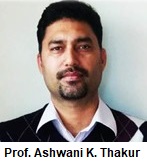In conversation with First Author, Shreya Ghosh
On her recent publication
Amyloid deposition in granuloma of tuberculosis patients: A single-center pilot study. Ghosh S, Kala C, Garg A, Thakur AK. Tuberculosis (Edinb). 2022 Sep;136:102249.
 MFCEM: Shreya congratulations on your publication! India, unfortunately, still contributes to a major chunk of Tuberculosis cases worldwide. Does your study on the formation Amyloid deposits in frequently occurring granulomas in TB patients, encourage the medical community to think of alternate or additional therapeutic strategies for TB?
MFCEM: Shreya congratulations on your publication! India, unfortunately, still contributes to a major chunk of Tuberculosis cases worldwide. Does your study on the formation Amyloid deposits in frequently occurring granulomas in TB patients, encourage the medical community to think of alternate or additional therapeutic strategies for TB?
Shreya Ghosh: Thank you so much for your appreciation. Protein misfolding is accompanied by the formation of insoluble protein-derived fibrillar deposits termed as amyloid fibrils. The linkage between tuberculosis and SAA-driven amyloid formation is well documented. However, SAA-derived amyloid onset and deposition start sites are not well understood in tuberculosis. In this study, for the first time, we have identified granuloma as the amyloid deposition site in TB patients. The findings of our study might set a stage for clinicians to diagnose the progression of amyloid formation in the early stages of tuberculosis. In addition, this work would encourage the medical community to devise therapeutic strategies to prevent the amyloid formation in TB patients. However, this study reflects preliminary findings on a limited number of samples and needs to be validated in a large number of patients to implement those therapeutic strategies.
 MFCEM: Would it be right to assume that amyloid formations could be used as a marker for the progression of the disease. If yes could you elaborate?
MFCEM: Would it be right to assume that amyloid formations could be used as a marker for the progression of the disease. If yes could you elaborate?
Shreya Ghosh: Our paper does not directly deal with this aspect. However, I think that it is a realistic possibility. Previous studies identified amyloid formation in TB patients several years after its onset. We captured such amyloid formation in early-staged TB patients. Future studies should foretell if there is any correlation between the progress of amyloid formation and tuberculosis.
MFCEM: I understand that this study was a collaborative effort by IIT Kanpur and the GSVM Medical College, Kanpur. How critical was this collaboration? Also do you envisage a possibility of a clinical translation of the study in the near future?
Shreya Ghosh: This paper made us believe in Alexandar Graham Bell: “Great discoveries and improvements invariably involve the cooperation of many minds”. This work would not have been possible without collaboration. Initially, Professor Ashwani and I spent a lot of time convincing the clinicians and patients to obtain the biopsy specimens for our research. Finally, we could collaborate with GSVM Medical College, Kanpur. Dr. Chayanika Kala’s active participation helped us a lot to conduct our study successfully.
Yes, of course. I genuinely believe that identifying amyloids in the early stages of TB patients has a high potential to be clinically translated. However, a huge effort involving multi-centers is needed to accomplish it.

